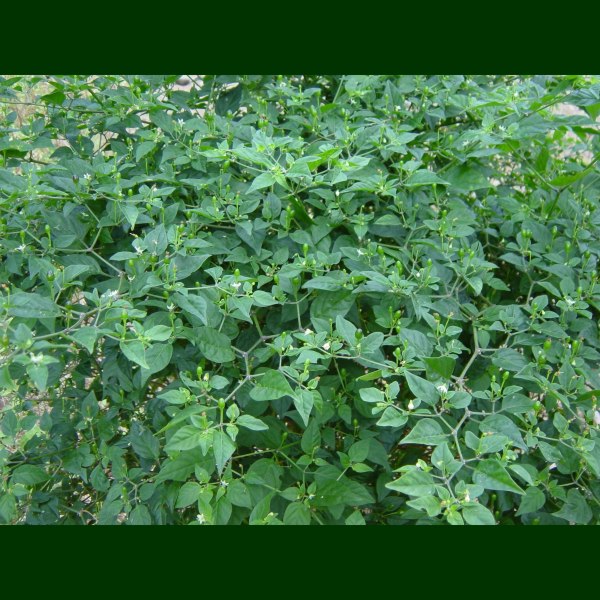 Hawaiian Name(s): pōpolo, polopolo, ‘olohua, pōpolohua (Ni‘ihau)
Hawaiian Name(s): pōpolo, polopolo, ‘olohua, pōpolohua (Ni‘ihau)Scientific Name: Solanum americanum
Vernacular Name: glossy nightshade
Family: Solanaceae
Status: indigenous?
Authority: Mill.
Description: Annual herbs, up to 1.2 m tall, wide-spreading
Habitat S. americanum occurs in a wide variety of habitats, including open sites, coastal forest, wet forest, subapline woodland, pasture, and disturbed roadsides 0–2380 m (Hawai‘i, Kaua‘i, O‘ahu, Ni‘ihau, Moloka‘i, Maui, Lāni‘i, Kaho‘olawe, Kure, Midway, Pearl & Hermes, Lisianski, Laysan, Nihoa). (Wagner et al. 1990:1268–1269).
Medicines: A very important medicinal plant. For problems in the respiratory system and skin eruptions the sap of the leaves and juice of the berries is used by itself or mixed with other ingredients. For treating cuts or wounds or as a general prophylactic, it is mixed with salt. To "tone up" the digestive tract the leaf buds are steaped with salt (Handy, Pukui, and Livermore 1934:18). For sore muscles, tendons, and joints, the juice from pōpolo leaves was sometimes applied to the affected area while it was sunned (Abbott 1992:98). Also as an ancillary ingredient in many other medicines. For example, to treat pu‘u‘eha (sore throat), or pu‘ukohekohe (enlarged or swollen tonsils), the bulbs of ‘aka‘akai, leaves of pōpolo and the bark of hina‘alo tap roots and salt and pounded together until mashed. The mashed mixtures is combined with water and strained through ‘ahu‘awa (Cyperus javanicus). One gargles the liquid mixture twice a day. (Chun 1994:18–19). To treat chills and high fevers, the leaves and bark of halapepe (Pleomele spp.) are combined with tap roots of pōpolo and ‘uhaloa (Waltheria indica), and a section of kō kea (white sugarcane, Saccharum officinarum). One combines the ingredients into a mash. Water is added and the liquid mixture is heated. Once the medicine has cooled, a patient will need to drink it four times a day until the fever or chills are gone. Afterwards, a purgative ‘apu is drunk ( Chun 1994:77–78). To treat asthma, one combines the leaves, bark and tap root of halapepe with ‘ōhi‘a ‘ai bark (Syzygium malaccense), ‘uhaloa tap root, pōpolo tap root, ‘ala‘alawainui pehu stems (Peperomia spp.), noni fruit (Morinda citrifolia), sections of kō kea and a mature niu (coconut, Cocos nucifera). All of the ingredients are mashed together; the liquid is strained with ‘ahu‘awa and left to stand. A portion of the medicine is boiled and another is mixed with hawaiian pia (Tacca leontopetaloides). The boiled portion is mixed with the cool portion. Once cooled the patient drinks the medicine twice a day (Chun 1994:78–79).
Non Medicinal Uses: Fruits eaten (Handy et al. 1972:235) also used for blackish purple dye (Krauss 1992:67).
Specific gravity of wood: n/a
Famous Locations:
Mele:
`Ōlelo Noeau:
Dye Color and Parts: Blackish purple (fruit); green (leaves)
Kino lau: KANE: Kane-pōpolo
Location on Bishop Museum Kalihi Campus:
Propagation Information:
Seed: Seed length approximately 1.3 mm. Photograph: B.Kennedy.

